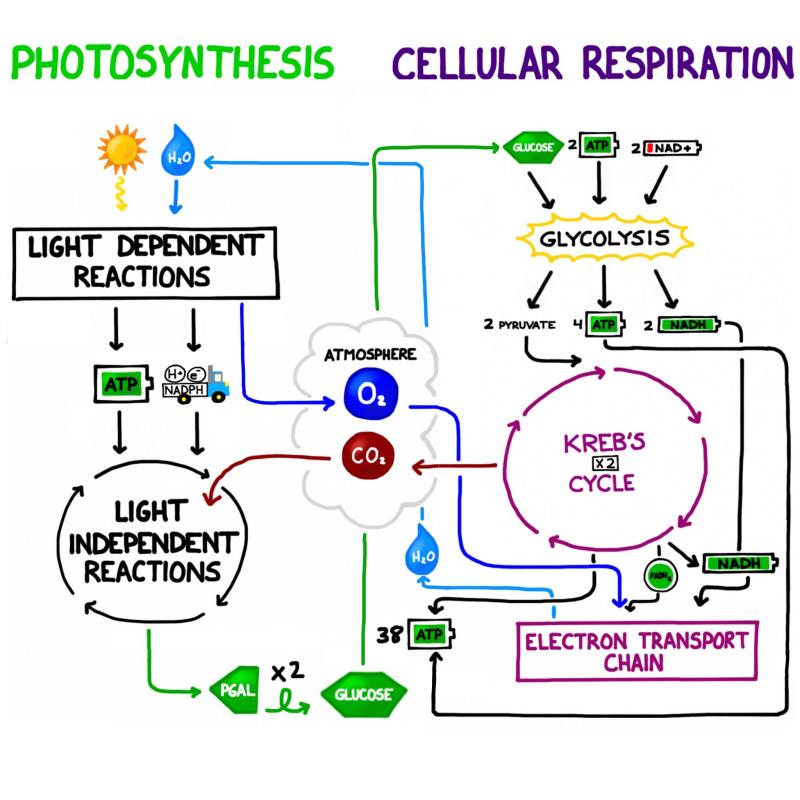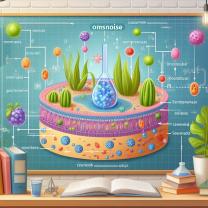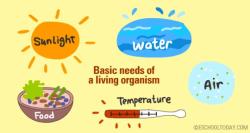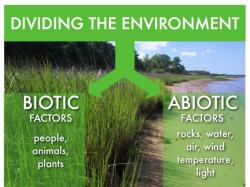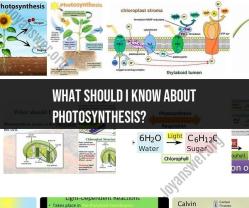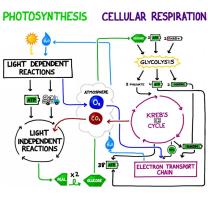What are the steps of cellular respiration?
Cellular respiration is the process by which cells break down organic molecules to produce ATP (adenosine triphosphate), the primary energy currency of cells. It occurs in three main stages: glycolysis, the citric acid cycle (also known as the Krebs cycle), and oxidative phosphorylation (including electron transport and chemiosmosis). Here's a brief overview of each step:
Glycolysis:
- Location: Cytoplasm
- Input: One molecule of glucose (6 carbons)
- Output: Two molecules of pyruvate (3 carbons each), two molecules of ATP, and two molecules of NADH (a coenzyme that carries electrons)
Glycolysis is the initial step of cellular respiration and involves the breakdown of one glucose molecule into two pyruvate molecules. This process also produces a small amount of ATP directly.
Pyruvate Decarboxylation (Transition Reaction):
- Location: Mitochondrial matrix
- Input: Two molecules of pyruvate
- Output: Two molecules of acetyl-CoA, two molecules of NADH, and two molecules of carbon dioxide
Before entering the citric acid cycle, each pyruvate molecule is converted to acetyl-CoA. This step releases carbon dioxide and generates NADH.
Citric Acid Cycle (Krebs Cycle):
- Location: Mitochondrial matrix
- Input: Two molecules of acetyl-CoA
- Output: Per cycle - Three NADH, one FADH2, one ATP (or GTP), and two carbon dioxide molecules
The citric acid cycle completes the breakdown of carbon molecules derived from glucose. For each round of the cycle (per acetyl-CoA), several electron carriers (NADH and FADH2) and a small amount of ATP are produced.
Oxidative Phosphorylation (Electron Transport Chain and Chemiosmosis):
- Location: Inner mitochondrial membrane
- Input: NADH, FADH2, oxygen, and ADP + inorganic phosphate (Pi)
- Output: Water, ATP
The electron carriers NADH and FADH2 generated in the previous steps donate their electrons to the electron transport chain (ETC). As electrons move through the ETC, they release energy, which is used to pump protons (H+) across the inner mitochondrial membrane. This creates an electrochemical gradient, and the flow of protons back into the mitochondrial matrix through ATP synthase drives the synthesis of ATP from ADP and inorganic phosphate.
In summary, cellular respiration is a complex process involving glycolysis, pyruvate decarboxylation, the citric acid cycle, and oxidative phosphorylation. The overall equation for cellular respiration is:
Glucose + Oxygen → Carbon Dioxide + Water + ATP
Each step contributes to the efficient extraction of energy stored in glucose and its conversion into ATP, which the cell can use for various energy-requiring processes.
Cellular respiration is a complex metabolic process that breaks down glucose into carbon dioxide and water, releasing energy in the form of ATP. This process occurs in all living cells, and it is essential for life.
The sequential steps involved in cellular respiration are as follows:
- Glycolysis: This process occurs in the cytoplasm and breaks down glucose into two molecules of pyruvate. Two ATP molecules are produced during glycolysis, but four ATP molecules are used up, resulting in a net gain of two ATP molecules.
- Pyruvate oxidation: Pyruvate is transported into the mitochondria, where it is converted into acetyl-CoA. This process releases one molecule of carbon dioxide.
- Citric acid cycle (Krebs cycle): Acetyl-CoA enters the citric acid cycle, which occurs in the mitochondrial matrix. The citric acid cycle releases two molecules of carbon dioxide and produces NADH and FADH2, which are electron carriers.
- Electron transport chain: The electron transport chain is located in the inner mitochondrial membrane. NADH and FADH2 donate electrons to the electron transport chain, which pumps protons across the membrane. This creates a proton gradient, which drives the synthesis of ATP.
- Oxidative phosphorylation: Oxidative phosphorylation is the process of synthesizing ATP from ADP and inorganic phosphate using the energy stored in the proton gradient.
Cellular respiration is broken down into its sequential processes based on the location of the processes:
- Cytoplasm: Glycolysis
- Mitochondria: Pyruvate oxidation, citric acid cycle, electron transport chain, oxidative phosphorylation
There are distinct phases or stages in the cellular respiration pathway:
- Glycolysis: This is the initial stage of cellular respiration and occurs in the cytoplasm.
- Pyruvate oxidation: This stage connects glycolysis to the citric acid cycle and occurs in the mitochondrial matrix.
- Citric acid cycle (Krebs cycle): This stage occurs in the mitochondrial matrix and produces most of the ATP from cellular respiration.
- Electron transport chain: This stage occurs in the inner mitochondrial membrane and pumps protons across the membrane, which drives the synthesis of ATP.
- Oxidative phosphorylation: This stage occurs in the inner mitochondrial membrane and synthesizes ATP from ADP and inorganic phosphate using the energy stored in the proton gradient.
Cellular respiration is a complex and essential process that provides cells with the energy they need to function.
